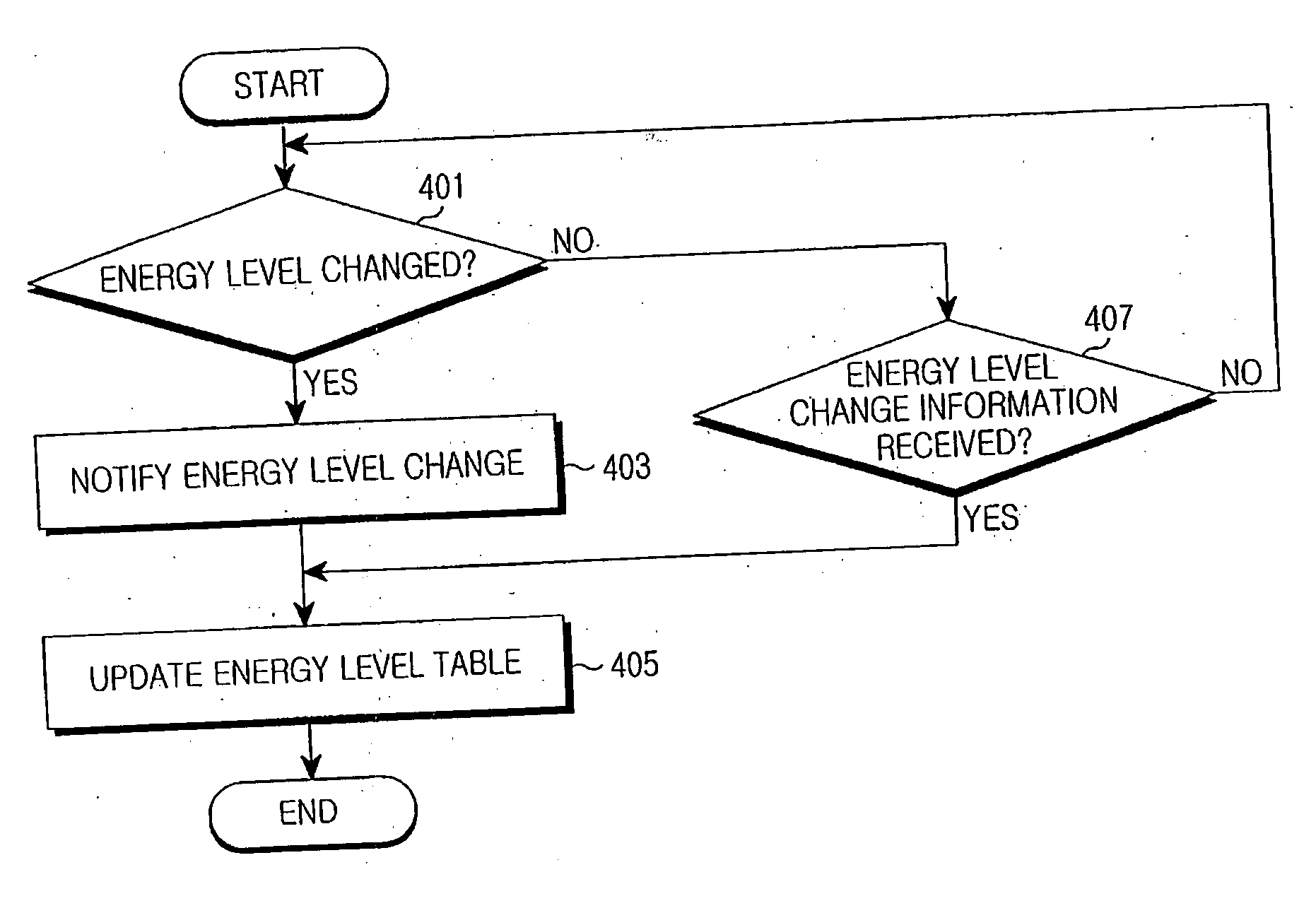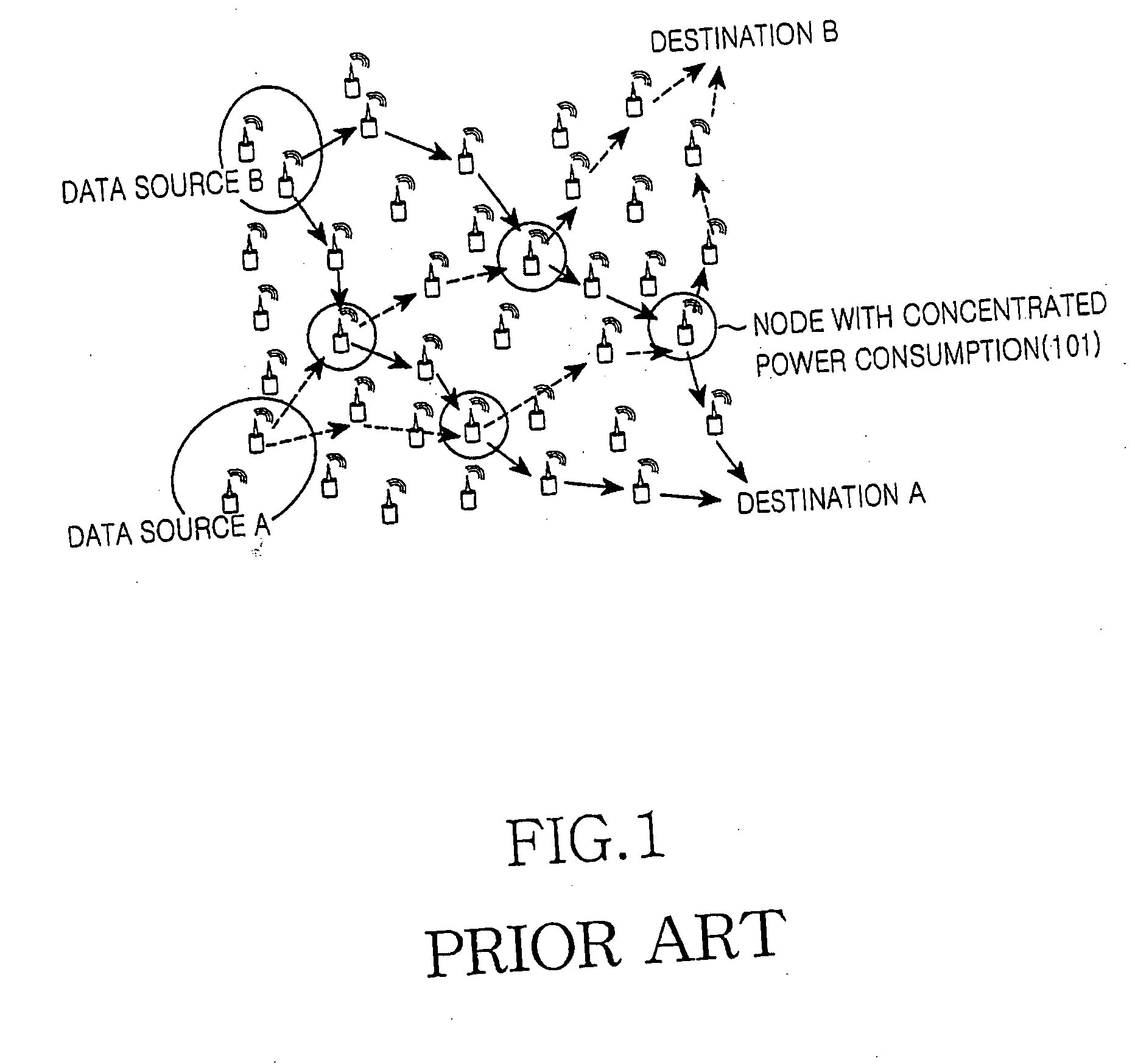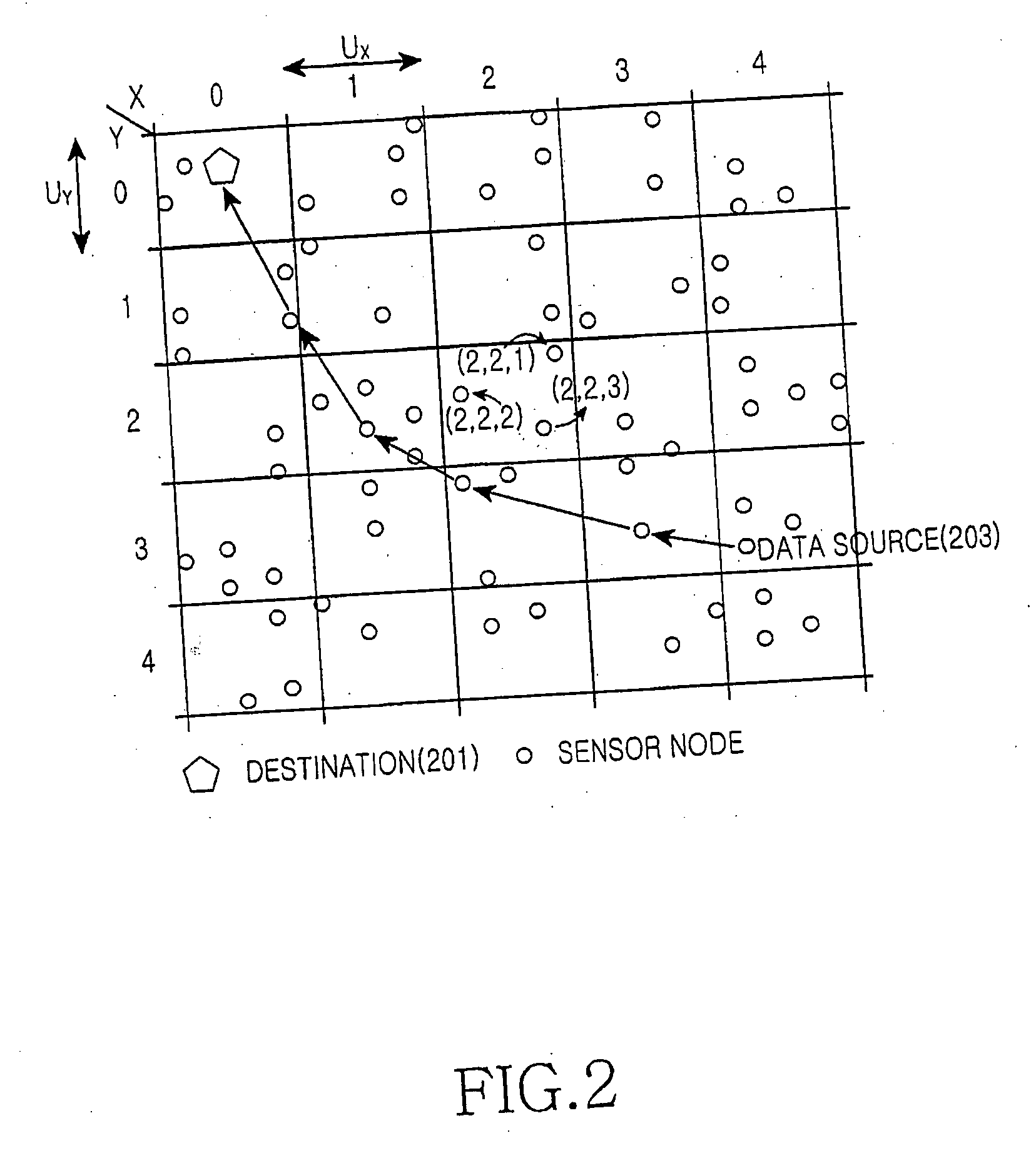Routing method in a wireless sensor network
a wireless sensor and routing method technology, applied in the direction of transportation and packaging, high-level techniques, wireless commuication services, etc., can solve the problems of reducing the battery lifetime of sensor nodes in the route, dsdv suffers from large battery power consumption, and shortened battery lifetimes so as to prevent concentrated power consumption of particular sensor nodes
- Summary
- Abstract
- Description
- Claims
- Application Information
AI Technical Summary
Benefits of technology
Problems solved by technology
Method used
Image
Examples
Embodiment Construction
[0030] Preferred embodiments of the present invention will be described herein below with reference to the accompanying drawings. In the following description, well-known functions or constructions are not described in detail for the sake of clarity and conciseness.
[0031] The present invention is intended to provide a technique for lengthening system lifetime in a wireless sensor network. Particularly, a routing method is provided for preventing concentrated use of particular sensor nodes and thus preventing the decrease of their battery lifetimes by grouping total sensor nodes into cells and monitoring the energy density of sensor nodes in each cell.
[0032]FIG. 2 illustrates a routing method based on cellular energy density in a wireless sensor network system according to the present invention.
[0033] To set up a route in the wireless sensor network, total sensor nodes are first grouped into cells and an address is assigned to each sensor node on a cell basis. This is because it i...
PUM
 Login to View More
Login to View More Abstract
Description
Claims
Application Information
 Login to View More
Login to View More - R&D
- Intellectual Property
- Life Sciences
- Materials
- Tech Scout
- Unparalleled Data Quality
- Higher Quality Content
- 60% Fewer Hallucinations
Browse by: Latest US Patents, China's latest patents, Technical Efficacy Thesaurus, Application Domain, Technology Topic, Popular Technical Reports.
© 2025 PatSnap. All rights reserved.Legal|Privacy policy|Modern Slavery Act Transparency Statement|Sitemap|About US| Contact US: help@patsnap.com



